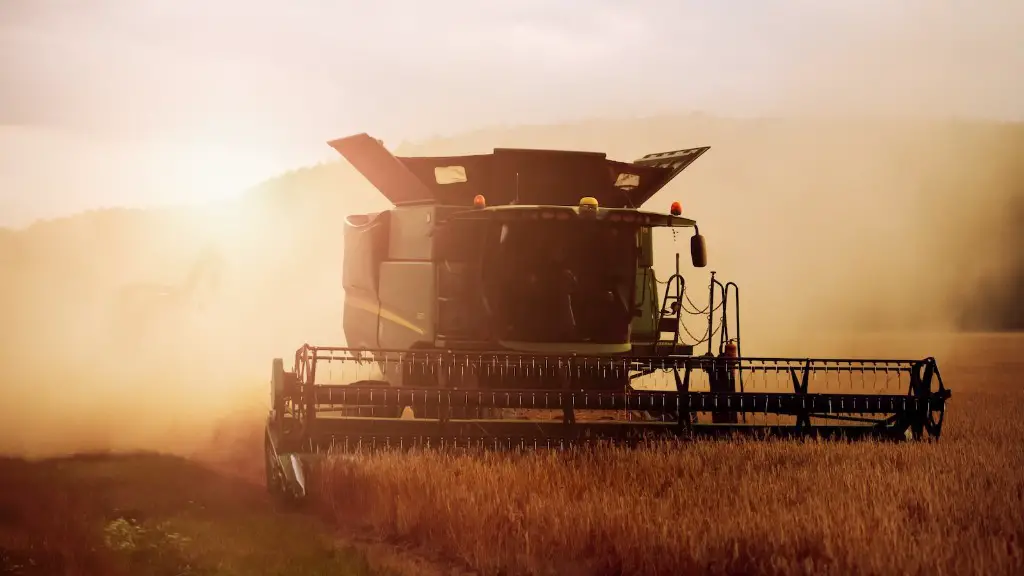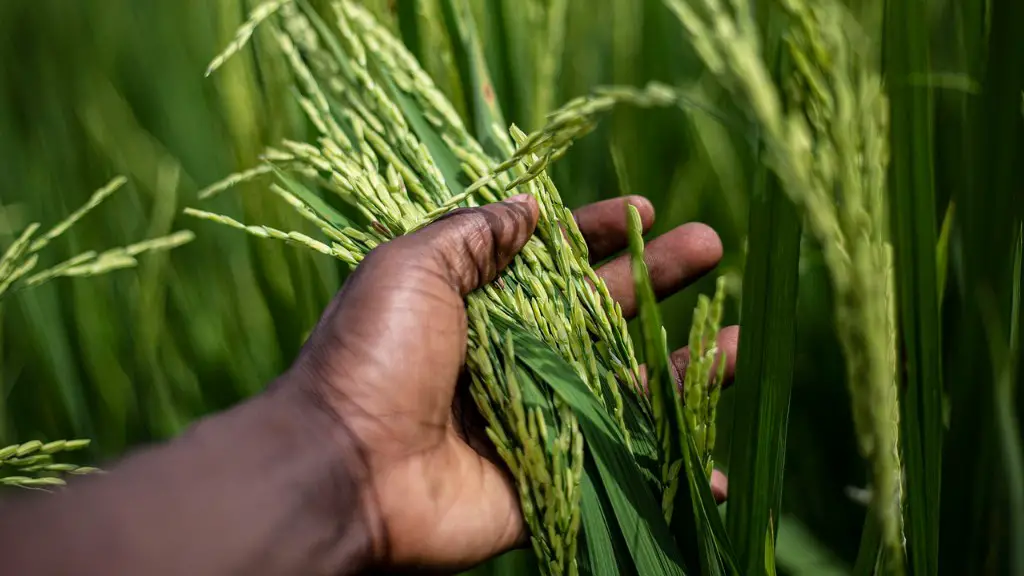Agriculture is an important part of the global economy, and its improvement is essential in terms of producing better quality food and increasing yields. To this end, a number of strategies and approaches can be employed to improve the system of agricultural production. Technology can be used to increase crop yields and the efficiency of production systems, while the choice of more beneficial crops and more beneficial agricultural practices can also make a difference. Furthermore, proper management tailored to the specific needs of different farms and areas can boost yields and productivity.
In terms of technological advances, the use of biotechnology, precision farming, and satellite imagery have proven to be highly effective. Biotechnology has enabled crops to be modified for particular properties such as disease resistance, higher yields and improved nutritional value, while precision farming allows for more precisely targeted inputs such as fertilizer, water, and seeds to be used in order to optimize yields. Satellite imagery and other technologies also allow for the monitoring of crops, soil and weather conditions, providing for more accurate information for farmers upon which to base their decisions.
Crop selection also plays an important role in increasing yields and improving nutrition. Finding the optimal combination of crops to suit the soil and climate, in addition to the farmer’s specific requirements, can provide substantial benefits in terms of yield. Additionally, the selection of more beneficial crops such as legumes can bring further improvements, as they are able to fix nitrogen in the soil and therefore increase fertility over time.
Additionally, the implementation of suitable farming practices can also improve yields and nutrition. Farmers can really benefit by using crop rotation, using cover crops, and incorporating crop residues back into the soil to build up organic matter. The use of organic farming techniques and natural fertilizers, pesticides and weed-control measures are also advantageous. The availability of appropriate agricultural inputs such as water, fertilizer and labor must also be considered.
Finally, proper management tailored to the specific conditions and requirements of each farm is essential. Farmer education and the use of business planning, financial management, and effective marketing all play a role in improving agricultural production. The implementation of suitable policies and legislation to support and protect family farms and smallholder farmers is also important.
Benefits of Biotechnology
Biotechnology is a powerful tool for improving the performance of crops, and for increasing the productivity and quality of food. This technology can be used to alter the genetic make-up of crops to produce novel traits, such as enhanced disease resistance, improved nutritional quality, and higher yields. Additionally, biotechnology can also be employed to create new varieties of crops tailored to specific conditions, such as drought-resistant crops or varieties that can thrive in saline soils.
Furthermore, precisely targeted biotechnological applications, such as gene editing and the introduction of single desired traits into plants, can be used instead of the more contentious GMO technology. This can prevent unwanted health and environmental implications and is considerably more cost-effective. Biotech companies and research institutions can also provide useful guidance, expertise and support to farmers who are looking to incorporate biotechnological advances into their production systems.
Ultimately, biotechnology provides unique opportunities for improving yields and quality of food, while also reducing the reliance on costly and potentially damaging agrochemicals. This technology is continually advancing, and its potential is immense, bringing with it a wealth of potential benefits to both farmers and consumers.
Advantages of Precision Farming
Precision farming is the advanced practice of using technology to precisely adjust and monitor inputs such as fertilizer, water, and seeds in order to optimize yields. This approach allows for the tailored application of agricultural inputs, resulting in higher yields and quality at reduced inputs. Additionally, precision farming also allows for the better understanding of soil and crop conditions for more informed decisions.
The use of satellite imagery and Global Positioning System (GPS) technology allows for the precise tracking of crop growth, soil moisture levels, weed conditions, and pest incidence. Additionally, variable rate technology (VRT) enables farmers to adjust their inputs according to the specific needs of their fields and the crops being grown. This allows for the accurate placement of fertilizers, pesticides, and other inputs, reducing wastage and increasing efficiency.
The use of precision farming can also aid farmers in making more specific predictions, such as predicting yields, calculating optimal harvesting times, and estimating potential risks and impacts. Furthermore, as precision farming reduces the use of inputs and cost, it also has tremendous potential to reduce the environmental impact of farming.
Overall, precision farming provides a number of advantages in terms of improving yields, reducing inputs, and minimizing environmental risks. As this technology continues to evolve, the range of applications of precision farming is likely to grow exponentially.
Advantages of Optimal Crop Selection
In agriculture, finding the ideal combination of crops to suit the soil and climate, as well as the farming system, can be beneficial in terms of yields, nutrition, and profits. Choosing the correct crops involves evaluating a range of factors such as soil quality, water availability, labor availability, and the desired production output. Additionally, the choice of more beneficial crops, such as legumes, can also bring improvements.
In terms of nutrition, the selection of nutritious and high-yielding crops can help to improve food security. Additionally, the use of locally adapted, drought-tolerant varieties can also enhance food security, as they help farmers to overcome the challenges of a changing climate. Furthermore, there are a number of other benefits that can be realized through the selection of suitable crops, such as increased incomes, improved soil fertility and reduced erosion.
Ultimately, the selection of the right crops is important, and the choice should be tailored to the specific conditions of each farm. A good knowledge of local varieties and their traits is essential, and advice from agricultural research centers and local farming organizations is often very useful in making the correct decisions.
Advantages of Appropriate Farming Practices
Making improvements to farming practices can also bring substantial benefits in terms of yields and nutrition. Proper crop rotation and the use of cover crops and crop residues can all help to replenish fertility in the soil and improve the yields of subsequent crops. Furthermore, the use of organic farming systems can reduce the use of potentially damaging agrochemicals, while the use of natural fertilizers and weed-control methods can be more cost-efficient.
Nutrition can also be improved through the combination of appropriate farming practices and suitable crop selection. By choosing crops that are higher in nutrition and yields, farmers can maximize the benefits from their land. By incorporating legumes into their crop rotation, for example, farmers can add nitrogen back into the soil and improve the health and fertility of their land.
The use of appropriate practices should be tailored to the specific needs and conditions of each farm. Developing an understanding of new methods and technologies, as well as consulting agricultural organizations, can aid farmers in making the right decisions and getting the most out of their land.
Benefits of Effective Management
In order to significantly improve agricultural production, effective management is essential. Having the right knowledge, skills, and resources are key components of success in agricultural activities. Farmer education and business planning can aid in making more informed decisions, while financial management and marketing strategies can help to maximize profits and ensure a good return on investments.
An understanding of effective farm management techniques is also essential for farmers to make optimal use of available resources. Proper utilization of available labor and the use of sound production techniques are essential to making the best use of resources and, ultimately, optimizing productivity. Additionally, proper attention to infrastructure and machinery must also be taken into account for efficient farming operations.
Finally, the development of suitable policies and legal frameworks is essential for providing farmers with the necessary support and protection. Governments and intergovernmental organizations play a crucial role in providing farmers with access to essential inputs and resources, while also creating a more secure and favorable environment for them to pursue their activities.
Conclusion
Overall, there are a range of strategies available to boost agricultural production and improve yields and nutrition. The use of technology and biotechnology, precision farming, optimal crop selection, and suitable farming practices, as well as effective management, all contribute to making agriculture a more efficient and productive endeavor. As such, the adoption of these technologies and approaches at the local level is essential in order to realize the full potential of agriculture.





